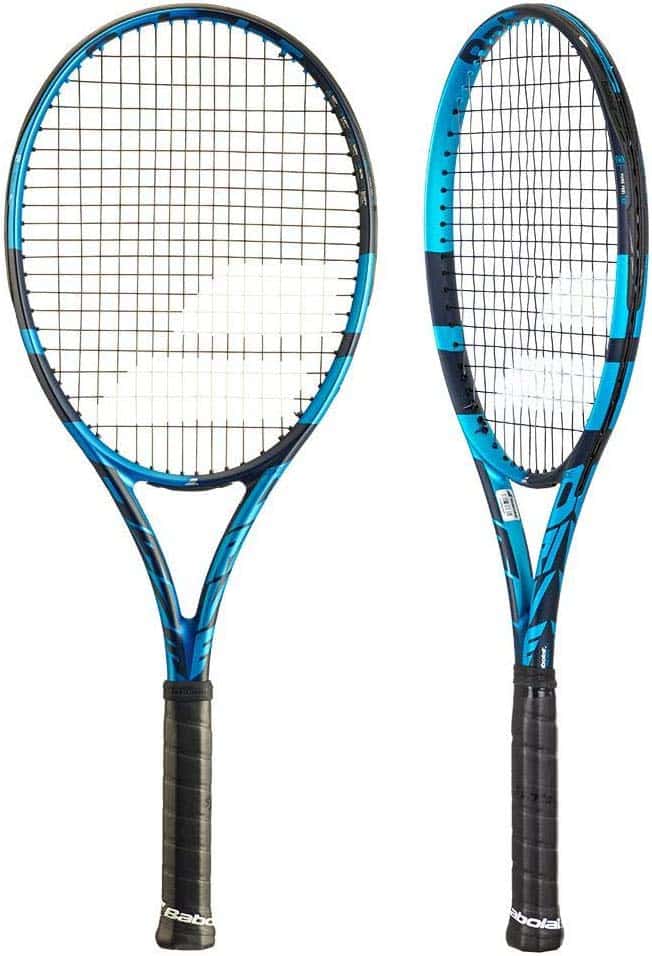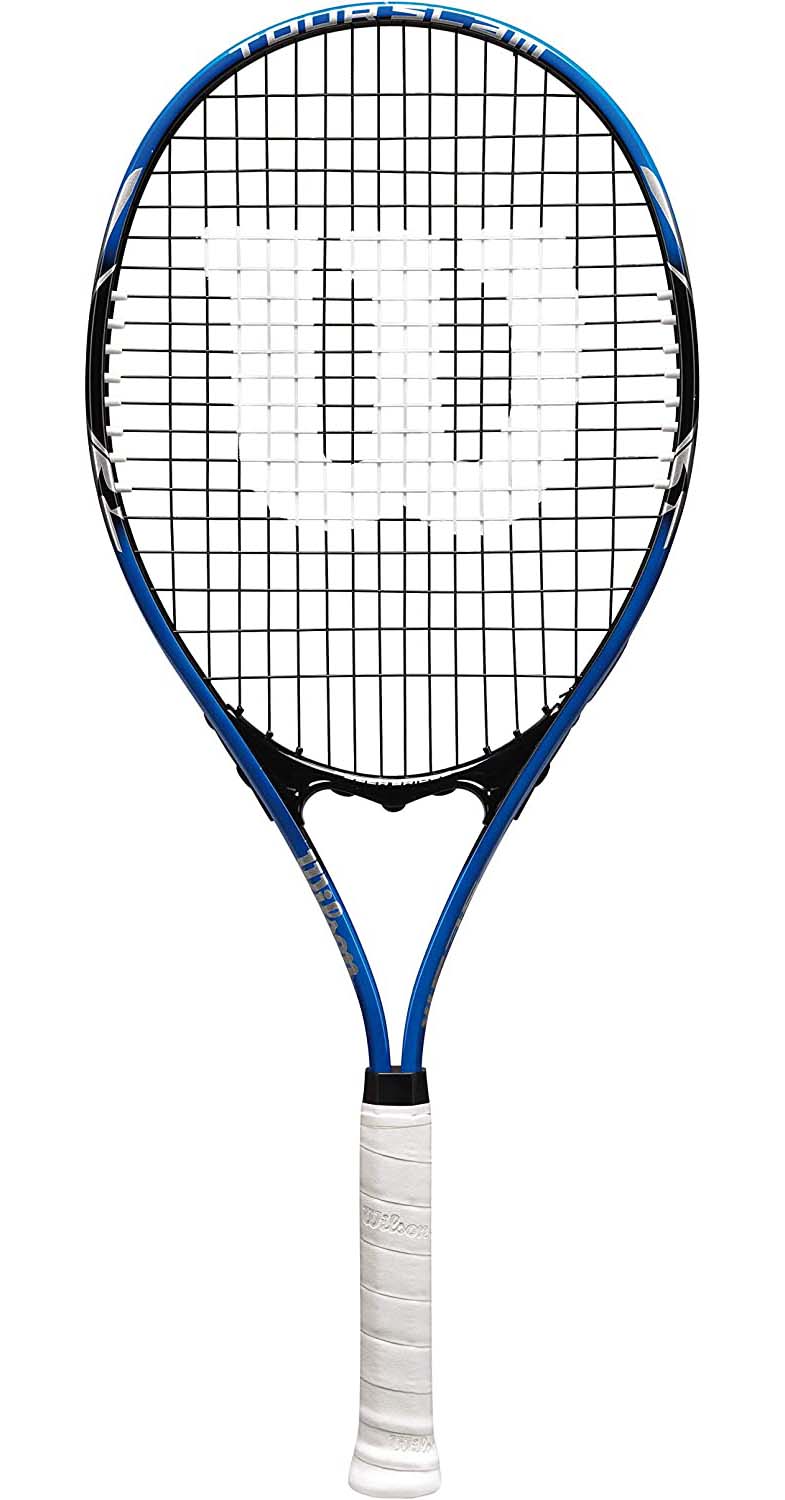Are you having trouble playing with a mid-sized tennis racquet? Then you must try one of the best oversize tennis racquets that we are going to present here.
What is the point of an oversized tennis racquet?
An oversized frame offers a large hitting area, resulting in more excellent stability and greater forgiveness over midsized racquets.
So your play becomes more stable and less strenuous. We have listed some of the best oversized tennis racquets on the market, followed by a comprehensive buying guide.
TOP 5 Oversized Tennis Racquet
Picture | Name | Ratings | Price |
|---|---|---|---|
(254 Reviews) | |||
(184 Reviews) | |||
(1212 Reviews) | |||
(94 Reviews) | |||
(11885 Reviews) |
Best Oversize Tennis Racquets - Buying Guide
Head size
The racket head is the place where the strings remain attached. When it comes to the best oversized tennis rackets, the size of the head be larger than usual. Larger heads are beneficial for two reasons:
First, a bigger racquet makes hitting the ball easier or reduces your margin for error when swinging due to the larger sweet spot. On the other hand, with a small racquet head, you can see the ball striking the frame, which is a certain way to get frustrated.
Second, an oversized head provides easier access to power, which is useful for developing appropriate technique and strength on your own.
Head sizes range from 93-107 square inches. We recommend only considering oversize racquets with a head size of 100 square inches or higher for starters.
Weight
The weight of the tennis racket is another important factor to consider as a beginner. As you might expect, retailers and manufacturers express racquet weight as racquet weight with strings.
Weight plays a vital role in the performance of a tennis racket. The most essential thing to remember is not to buy a hefty racket. You want it to be comfortable to handle and easy to move.
For female beginners, we recommend racquets weighing 11.6 ounces or less.
Grip Size
When you purchase the best oversize tennis racquets, you will have the option to choose a handle size.
Finding the right grip size can help you prevent injury by avoiding a grip that is too small or too large. The grip size is a matter of personal interest, so you should get something that feels comfortable.
Here is a chart that shows you different sizes of handles.
US Sizes | Dimensions in mm |
4 inches | 100-103mm |
4 1/8 inches | 103-106mm |
4 1/4 inches | 106-110mm |
4 3/8 inches | 110-113mm |
4 1/2 inches | 113-118mm |
4 5/8 inches | 118-120mm |
4 3/4 inches | 120-123mm |
While choosing the right grip size isn't an exact science, you can take a simple hand measurement to get the proper grip—all you need is a ruler.

In the photo, you can see the size of my hand, just over 4 3/8 or 109 mm. Most players don't quite fit the scale lines on the chart, like mine. If you're buying online, I recommend purchasing the handle size smaller than your size because you can increase the size of a handle using an overgrip.
However, if you can, I recommend that you go to any store that sells tennis rackets for adults and grab the two handle sizes closest to your size to get a feel for things. Whichever is more comfortable is the grip you should get.
Other Features For The Best Oversized Tennis Racquet
When you're just starting out, I recommend not getting hung up on the features below, but I always encourage players to familiarize themselves with them.
Below we'll look at what exactly the specs represent, how they're measured, and how they affect racquet performance in general.
- Balance: Rackets will be head light (HL), head heavy (HH), or equal balance (EB), which represents the weight distribution of the racket and is measured by scores such as 4 points HL. Oversized racquets are usually head heavy racket. Many beginners appreciate tennis rackets with HL as they are easier to swing and maneuver.
- Swing weight: Not to be confused with compressed weight, this is a measure of how heavy a tennis racket feels when swinging and can be useful for comparing one racket to another. The balance of a tennis racket has a significant effect on its swing weight and is expressed as a numerical value, i.e. 324.
- Stiffness: The stiffness or RA rating represents the amount of flexibility a tennis racket exhibits and is represented as a numerical value, i.e. 67. Generally speaking, a rigid racket is a frame with more flexibility, less power and then more control for a player. the more power or energy is returned to the ball, while the
- Beam Width: the measurement in millimeters of the frame width of the tennis racket stringer. Typically, a thicker beam provides more power, while a thinner beam provides less power. Some racquets have a consistent beam width all the way through, while others vary at different points in the frame.
- IP string: The string pattern of a tennis racket refers to the number of main or vertical and diagonal strings. A tennis racket with fewer outlines and crosses has an open string pattern, i.e. 16×19, while at the other end of the spectrum it would be a closed string pattern, i.e. 18×20. An open string pattern tends to increase power and spin, while a closed string pattern usually provides more control.
Best Oversized Tennis Racquets - FAQ
Q1 - Do any pros play with an oversize tennis racket?
On the professional tour, it is currently rare. More oversized rackets have more power and a bigger sweet spot, which is great for intermediate players. The trade-off is entirely under your hands. Pro-style (heavy, smaller head) rackets let pros strike with more power and control.
Pro players need to hit shots near to the line to gain points, while intermediate players can only succeed in hitting pace and placing the ball on one side or the other. Moreover, pros prefer rackets with smaller sweet spots as their ball strokes are more accurate.
Q2 - What size is an oversized tennis racket?
Oversized tennis racquets have a head size of 105 square inches or more which is best for high school tennis player. For your knowledge, 85-90 square inch tennis racquets are rated medium, while 95-100 square inch racquets are called mid-plus.
If you play with a lot of power, spin, and double backhands, you should consider a large tennis racquet. No, they aren't exclusively for the elderly or feeble. Some even suggest they are only for novices, which we strongly oppose.
Q3 - Are oversized tennis racquets good?
There's a frequent notion that large rackets are exclusively for certain players. These skewed perceptions frequently focus on older, smaller, or weaker athletes, but this is just not the case in reality. Oversized frames provide several advantages over mid plus and midsize rackets. Larger heads usually provide more forgiveness, power, and torsional stability per weight.
This is complicated by the fact that weights might fluctuate. If two rackets are of same weight, the one with the longer face from three to nine o'clock will be more stable. Oversized rackets are generally 107 square inches or larger.
Q4 - What are the main differences between oversized racket and normal sized racket?
Less experienced players and those who use lower compression balls will benefit from a larger racquet. So it's usually built of aluminum, which is cheaper and lighter.
A standard size racket comprises either composite or complete carbon graphite. A well-built graphite racket has more stiffness for performance and more shot stability for control. This is critical as your game develops, mainly when you go to a tougher and heavier standard yellow tennis ball.
Additionally, seasoned players will dig into frame designs and unique technologies to obtain the ideal playability qualities that best suit their style of play and physical attributes.
Q5 - Should I get an oversized racket?
Larger frames provide many advantages that mid-plus and midsize rackets lack. The bigger the club's head, the more forgiving and powerful it is, and the more torsionally stable it is for its weight.
Q6 - Does Babolat provide racquets for big heads?
In terms of head size and length, the 2018 Babolat Pure Drive 110 is closer to your typical oversized racquet, but it offers additional advantages for aggressive baseline players. Babolat set out to design an enormous, high-performance racquet with all the features that make their Pure Drive model so popular.
Q7 - Is a heavier racquet more powerful?
For extra strength, use a heavier racquet. To help experienced players achieve power via complete swings and appropriate technique while still keeping outstanding control, heavier racquets often have smaller heads and flexible frames.
Q8 - How do I know if the size of my tennis racquet is right?
If there is room between your thumb and index finger, the grasp is excessively loose. If your grip is too small, you'll need to use more force to prevent the racquet from twisting in your hand.


